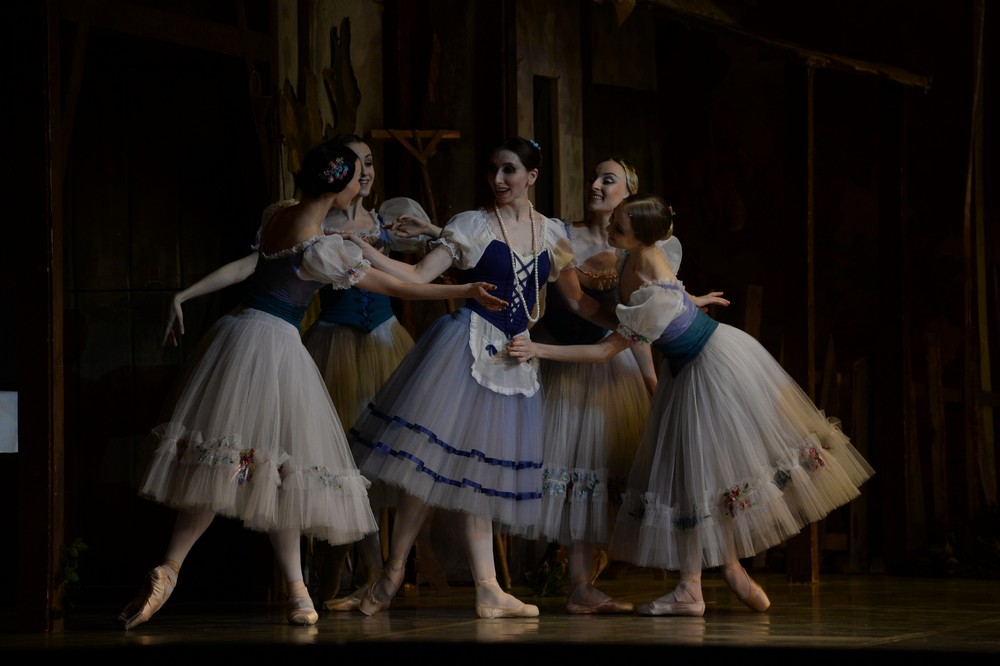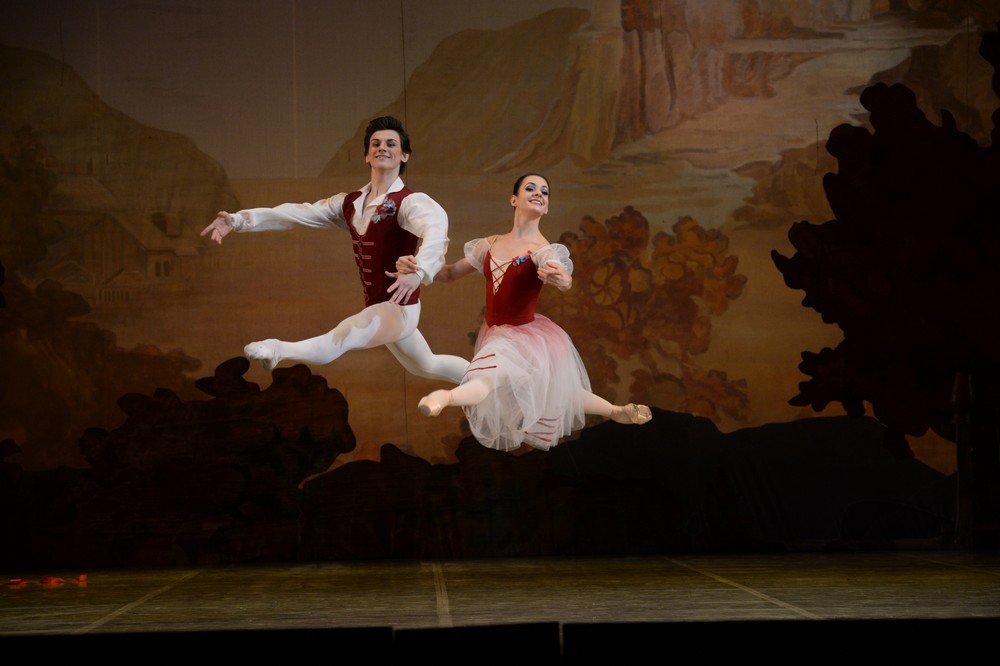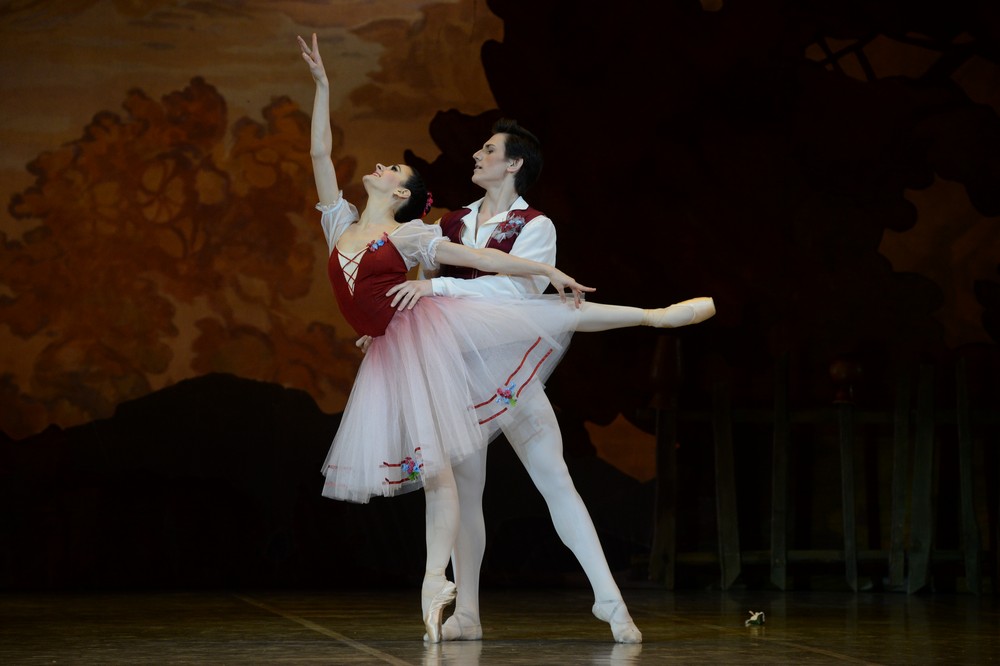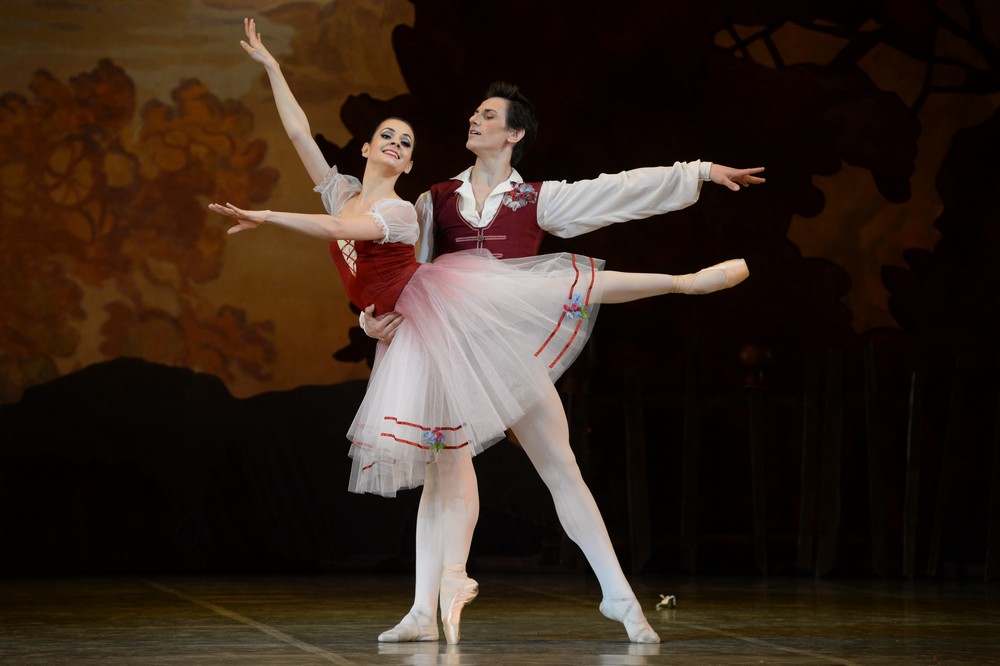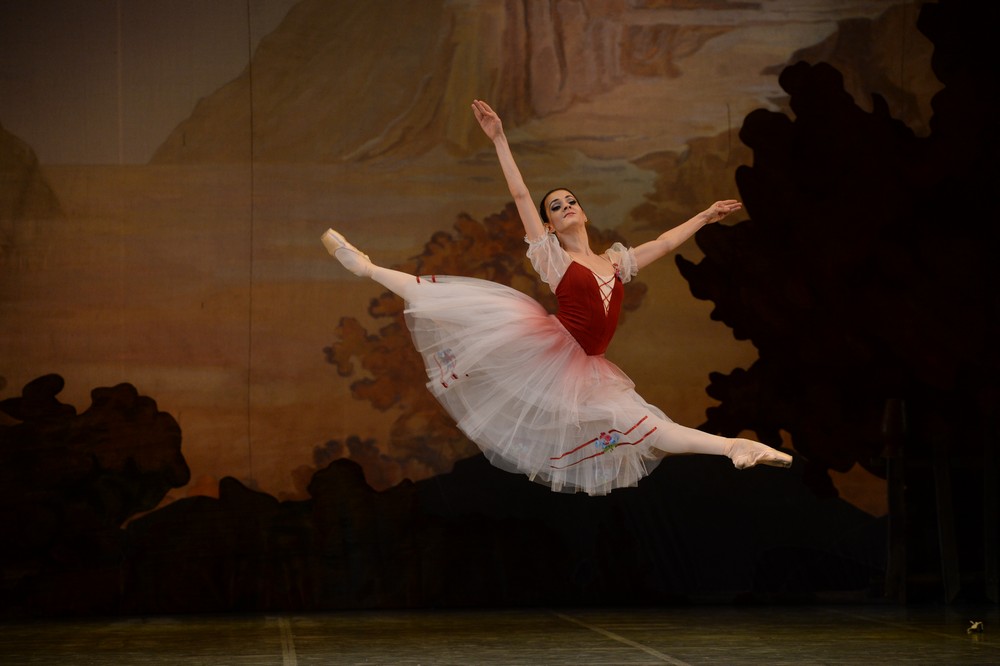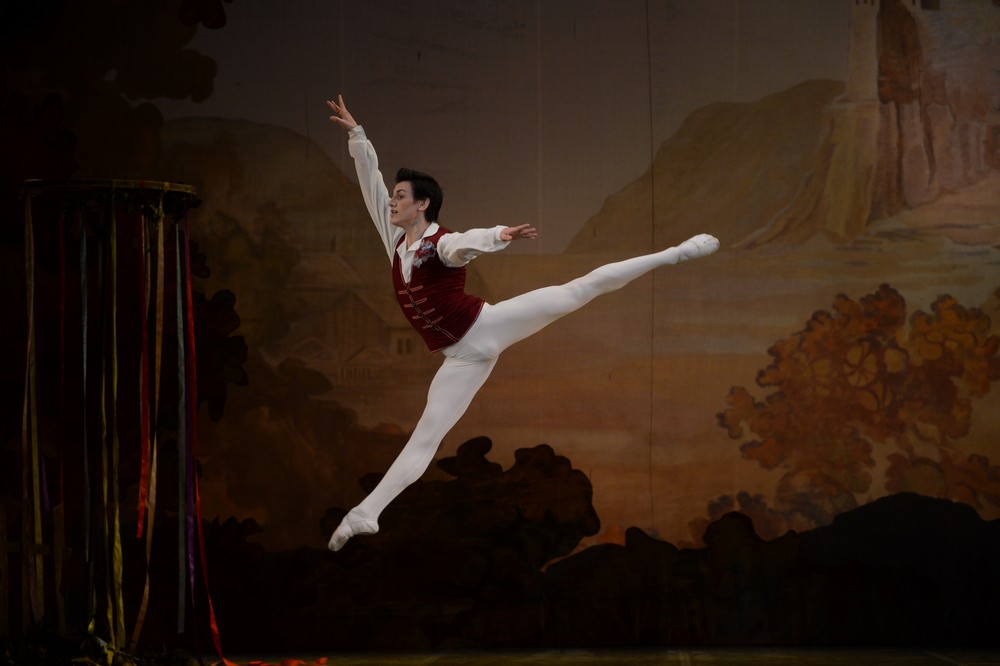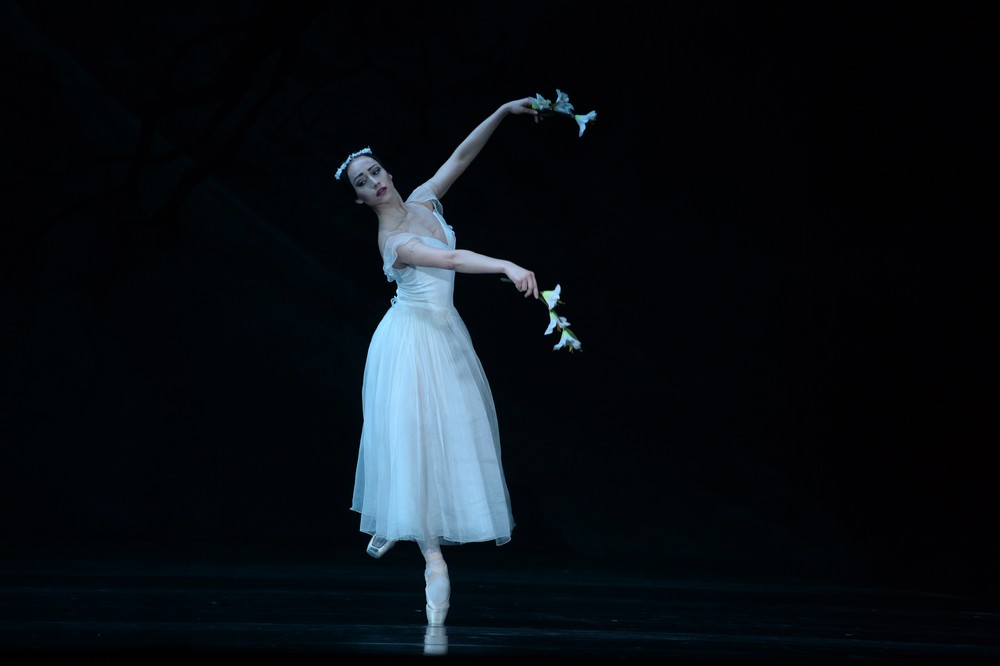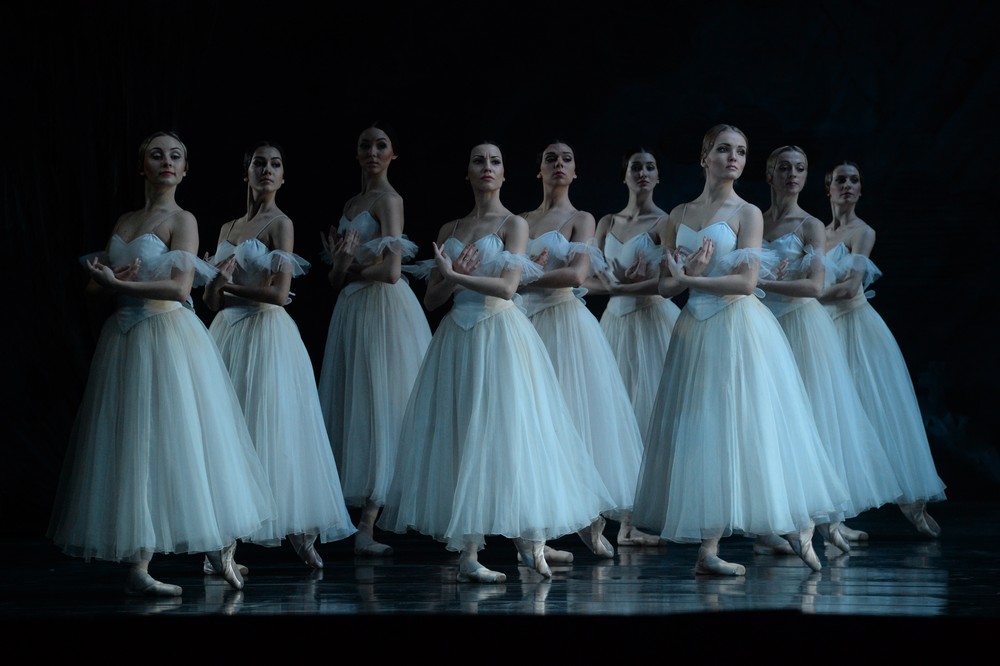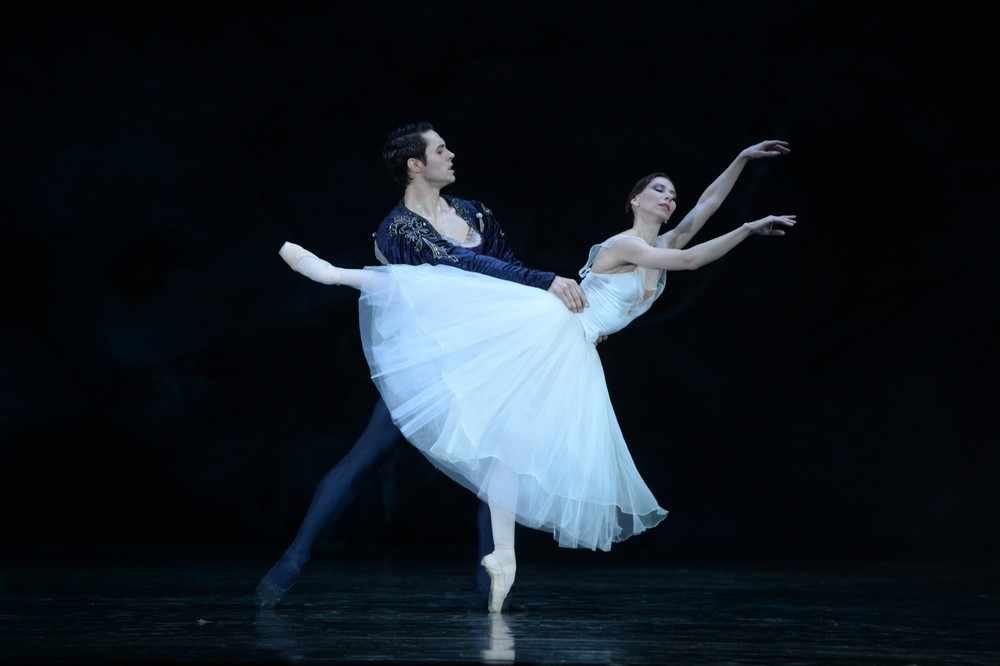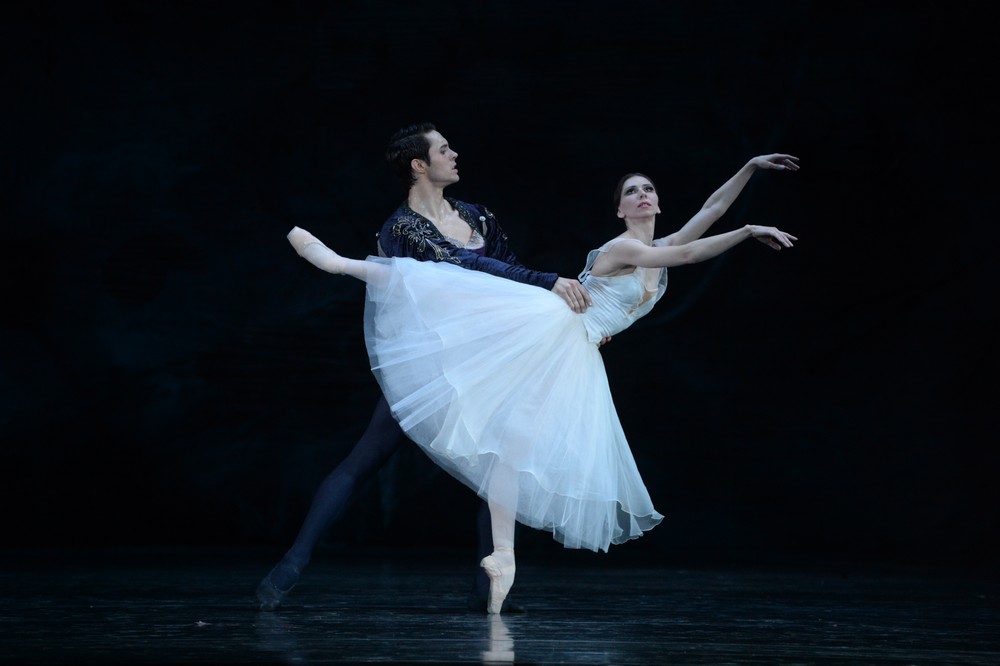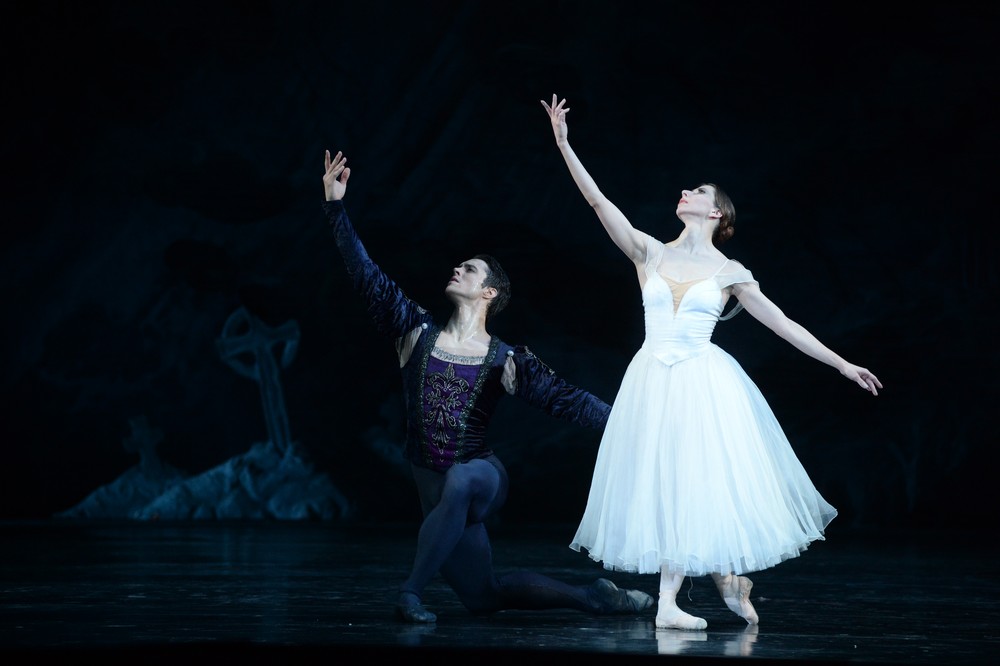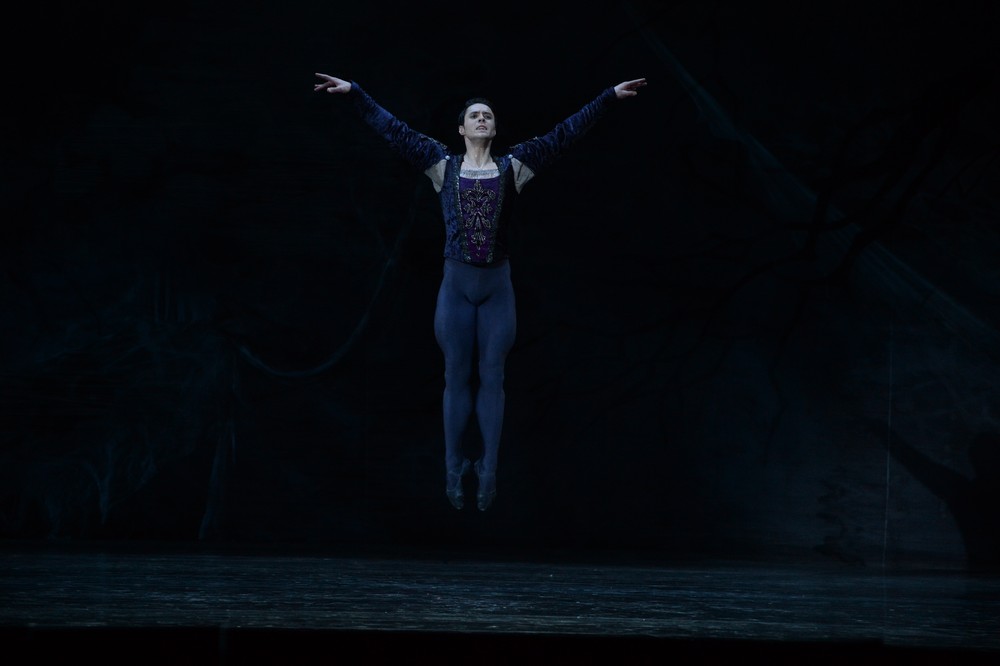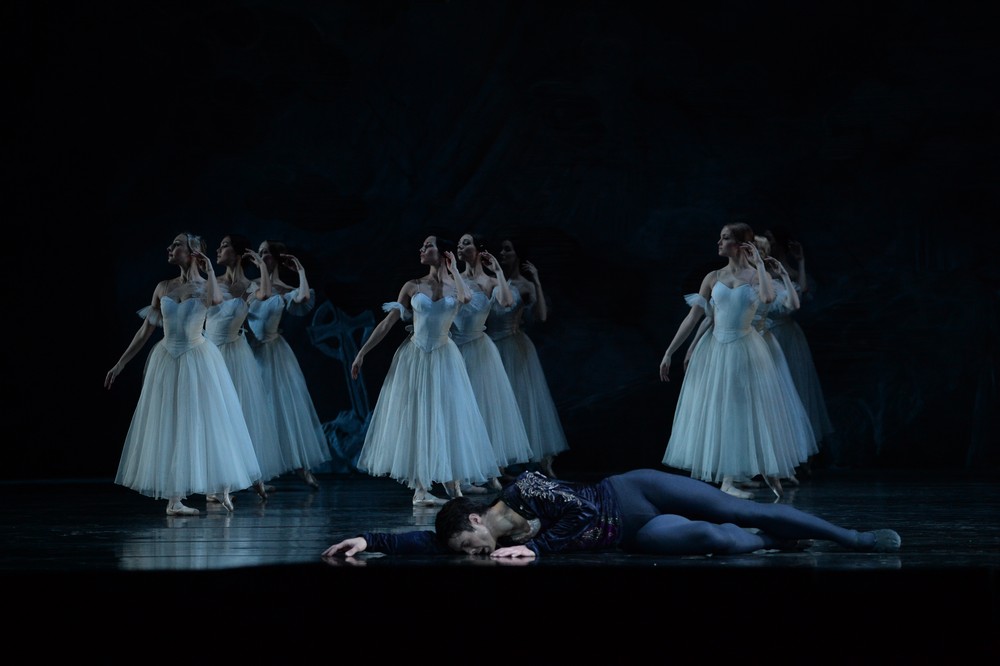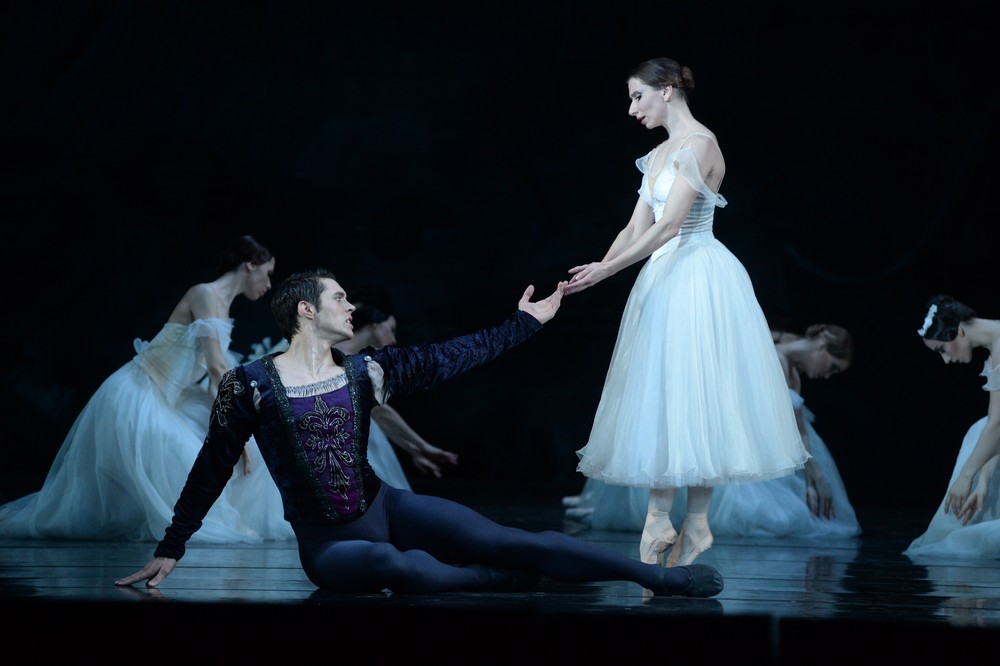hall
Artists
Credits
Libretto by Théophile Gautier, Jules-Henri Vernoy de Saint-Georges, and Jean Coralli after the legend told by Heinrich Heine
Choreography: Jean Coralli, Jules Perrot, Marius Petipa
Staged by Sergey Vikharev
Stage Designer: Igor Grinevich
2 hours 20 minutes
one interval
Première of the production: 26 September 1999
The production was shown on tour to Cagliari (Sardinia, Italy, 2005)
“Giselle” is a choregraphy which became a symbol of the romantic ballet of the XIX century and which remains popular nowadays. Fate of young peasant girl Giselle who got deceived by Count Albert but managed to find strength to not only forgive her beloved one but also to deliver him from death, won audience’s hearts many years ago and the ballet sweeps all before one ever since.
History of the ballet
The ballet received its première at the Paris Grand Opera on 28 June 1841 (choreography by Jules Perrot and Jean Coralli, stage design by Pierre Ciceri, costumes by Paul Lormier). The Paris première was a great success that surpassed all the expectations. The press was full of raving reviews, there were almost no negative comments. Jules Janin was most accurate in his review: “You name it — they have got it in Giselle! All the imagination, poetry, music, composition of the new pas, brilliant dancers, harmony, full of life, graciousness, energy; Adèle Dumilâtre and especially Carlotta Grisi. There is everything enough. Good luck! That’s what you call ballet!”
The whole month long the Opera was showing only Giselle: it was performed seven times with growing success. By the end of 1841 Giselle was shown 26 times.
The production itself was traveling faster than its fame. The participants of the Paris première took it to many cities and countries. Soon the participants of the London and St Petersburg premières did the same. Thus, Giselle was taken worldwide: 1841 — Paris, Bordeaux; 1842 — Marseille, Turin, London, Brussels, Vienna, St Petersburg; 1843 — Lyon, Milan, Venice, Berlin, Moscow; 1844 — the Hague, Florence, Genoa; 1845 — Stockholm, Rome, Dublin, Lisbon; 1845 — Boston, Philadelphia, Charleston, Berlin, New York; 1848 — Copenhagen, Warsaw; 1849 — Konigsberg.
All the European cities saw Giselle during the tours of the famous ballerinas. Every dancer wanted to have the ballet in her repertoire. It was the first ballet in history that enjoyed such success. Incomplete data indicates that at the Paris Opera Giselle, was shown 150 times during 18 years, while the previous famous ballet La Sylphide received 59 performances for 12 years. Long story short, Giselle became second to none.
Giselle in Russian ballet of the 19th century
It was in Russia that Giselle found its home and a new life, got the new artistic power, which made it the epitome of the classical heritage.
Giselle received its première in St Petersburg at the Bolshoi Theatre on 18 December 1842. Ballet master Titus didn’t think much about the characters of the production, he just transferred the Paris production. There were some changes in the dances of the Wilis introduced. He rejected the inserted divertissement — the feast of the grape gatherers, hunters didn’t ride the horses, as they did in Paris, there was no mentioning of the machinery in Act II.
Since 20 October 1849, the posters of Giselle lacked the name of Titus, but there appeared Jules Perrot. It seems that he introduced the new changed: he inserted pas de trois and cut the peasant scene for ever. On 8 October 1850, Carlotta Grisi, the first performer of the title role, danced in St Petersburg.
Since February 1884, Giselle’s posters said “The Ballet is staged by Marius Petipa.” Petipa didn’t listen to the advice of the press and ballet fans: he kept and enriched the old Giselle. One can consider him an editor of the choreographic text of Giselle. It’s thanks to Petipa, Giselle wasn’t lost.
The Russian Giselle is far from the French production of the 19th century. In his book, Yury Slonimsky noticed: ’The French Giselle is a sentimental melodrama, dedicated to the unhappy love of a grisette, a peasant girl, one of the many deceived girls of those days. The girl’s disaster is no more than an accident. Her feeling stays in the memory as a nice, unbelievable naïve illusion. The Russian Giselle is a grand drama of the heart. Love is not an illusion but a symbol of faith.
In Russia, Giselle has overcome the Grand opera style — a luxurious show, full of pompous divertissements and spectacular scenes. The Russian Giselle became more chamber. Step by step Giselle receives new features of her character: the “life of the heart” is important. You can see the difference between the French and Russian treatment of the main character in every scene. The Wilis were reinterpreted, too.
When the content of Giselle changed in Russia, there appeared a conflict with the French finale of the performance: the hero seeks comfort in his fiancée’s arms. When the French author told the story of Giselle-Wilie, he asked: “And what about the hero?” And answered: “He left comforted by his sword-bearer and his fiancée.” But the spectator who has passed through the twists and turns of the Russian Giselle, has passed the point of no return. Bathilde didn’t appear any more.
Albert may fall unconsciously or run all over the stage, calling Giselle, who has disappeared forever, he may leave holding a flower or cry on his sword-bearer’s shoulder — it’s important that in Russia Giselle has got a new finale. Whether Albert returns to Giselle’s grave or not, the image of his beloved will stay forever with him. The new finale is an essential part of today’s productions. The attempts to return the old finale failed..."
Giselle is considered to be a production of three choreographers. It became a great tradition of the Russian ballet and made it the owner of all the choreographic treasures of the past, lost by the theatres that created them."
Act I
A village in the mountains, surrounded by the wood and vineyards. A peasant house, where Berta and her daughter Giselle live. Peasants are going to harvest the grapes. The girls greet their friend Giselle, their universal sweetheart.
Hans the Gamekeeper arrives. He swears to wreck the happiness of Giselle and a young man, who lives in the hunting cabin. Hans hides away. Count Albert disguised as a peasant comes out of his cabin followed by his sword-bearer Wilfried. Alfred has come to see Giselle. Wilfried tries to talk him out of it. But Albert pushes him aside, knocks on the door and hides. Giselle comes out to answer the door. On seeing nobody, she is going to leave. Albert appears. He touches Giselle’s arm. Step by step their dance turns into a love scene. Hans appears near them. He pledges his loyalty to Giselle. Albert drives him away.
Giselle’s friends return from the vineyards. They start dancing, Albert is happy to join their merriment.
Berta comes out of the house and stops the dances. She reminds her daughter that she should dance a lot, as she has a weak heart. Everybody leaves.
Hans returns. Deeply offended by Giselle’s rejection, he decides to reveal his rival’s secret and steals into Albert’s cabin.
The sounds of a hunting party are heard, soon ladies and gentlemen appear. Count and his daughter Bathilde, Albert’s fiancée, are among them. Tired of hunting, they need some rest. Count points at Giselle’s house and asks to call the owner. Berta comes out together with Giselle: they offer refreshing drinks to the guests. Bathilde is enchanted by Giselle and gives her a necklace. The noble guests go into the house to have some rest. Hans is seen in the window. He is holding the Count’s sword, a striking proof of Albert’s noble origin.
Harvest festival. In the midst of the celebration, Hans arrives, he pushes Albert and Giselle aside and shows the sword that he has found in Albert’s cabin. Giselle asks for explanations.
Albert is enraged: he rushes at Hans. Wilfried timely intervenes and stops his master. Hans blows the horn. Bathilde with her escort come out of the house. She is surprised to see Albert dressed as a peasant. Albert kisses his fiancée’s hand. Giselle understands that her lover’s vows were not true. Bathilde shows her engagement ring — she is Albert’s fiancée. Giselle in tears falls in her mother’s arms. In her darkened mind she has visions of past: oaths, words of love, dances... Giselle dies.
Act II
Late in the night. Three hunters have lost their way not far from the village cemetery. Hans comes here. He warns the hunters about the ghosts who grab lone travelers and make them dance to dance. Mysterious sounds are heard, corpse candles are seen. The hunters and Hans scatter away horror-stricken.
The Wilis and Myrtha, their Queen, are flooded with moonlight. They are dancing and making magic movements, getting ready to meet a new Wilie. At Myrtha’s sign, Giselle appears from her grave. The Wilis hear some noise and hide away.
Albert followed by Wilfried appears in the cemetery. Corpse candles are seen again. The sword-bearer warns the Count about danger, but Albert is adamant: he wants to stay alone at the grave of his beloved. Suddenly Albert notices Giselle’s ghost and follows her.
Hans is chased by the Wilis. The Gamekeeper is trying to break their circle, he begs for mercy, but the avenging Wilis shove him into the water.
Albert chased by the Wilis appears. He is doomed to death. Giselle runs in, trying to protect her beloved. Myrtha orders Giselle to dance. The Wilis make a circle around Albert. With no power left, he prostrates at Myrtha’s feet.
The clock is chiming. It’s morning. The Wilis lose their power and disappear. The ghost of Giselle is seen for the last time. Albert is left alone.
